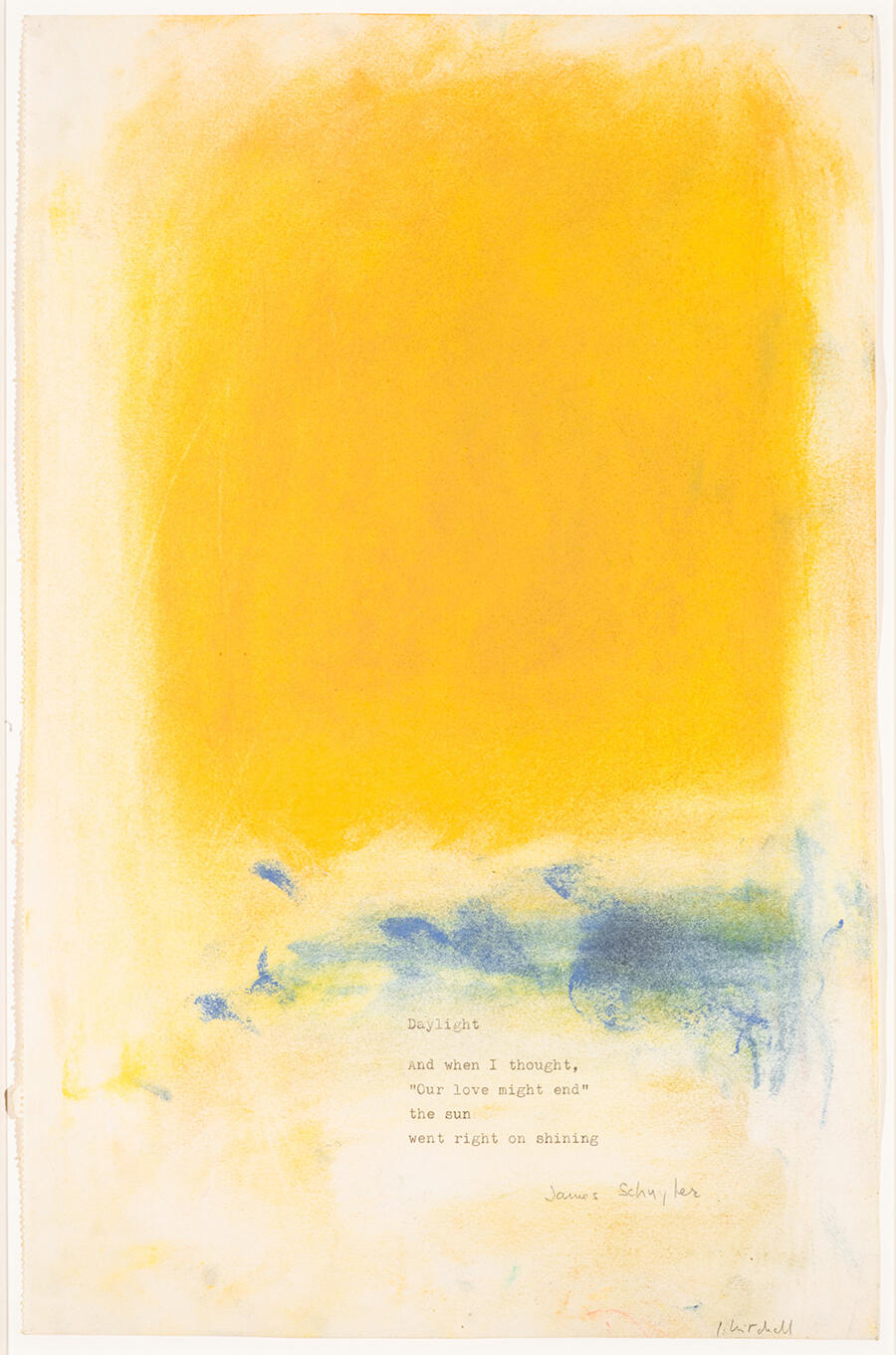Joan Mitchell’s Ode to Spring
The late artist’s touring retrospective arrives at the Baltimore Museum of Art, showcasing her colourful, large-scale abstractions
The late artist’s touring retrospective arrives at the Baltimore Museum of Art, showcasing her colourful, large-scale abstractions

When viewing the Joan Mitchell retrospective, the word ‘intimate’ – both as a descriptor and as an action – comes to mind. The feeling of intimacy within the exhibition stems from the selection of Mitchell’s most important works from across her four-decade career: though most of the paintings on display are large in scale, dominating whole walls from top to bottom, the viewer does not feel diminished but, rather, welcomed inside the artist’s world. What Mitchell intimates are the landscapes, memories, music and poetry of her realm, offering a welcome refuge in which momentarily to escape the world outside.

The recent opening of the show at the BMA aligns well with the changing of the seasons, too. Indeed, the first gallery feels like winter: at the start of a new year and at the beginning of a long career. Along one wall hangs a selection of Mitchell’s earliest figurative works wherein the steady move towards abstraction is discernible, from Untitled (1948), a Henri Matisse-like interior, to one of her first truly abstract paintings, Lyric (c.1951). Mitchell’s work is often associated with landscape, which is evident in these pictures (and titles) in the first space, such as City Landscape (1955) and Hemlock (1956), where the effect of the first few places she lived – from her affluent upbringing in Chicago to her earliest days as an artist in New York – can be traced.
The second gallery feels more transitory – somewhere between winter and spring. One painting in particular, Mud Time (1960), evokes this liminal time of year. Mitchell’s palette here is murkier, with only hints of brighter colours peeking through, like the delicate petals of the earliest spring flowers. The tableau is also a direct reference to the Robert Frost poem ‘Two Tramps in Mud Time’ (1937). In it, the speaker, who’s chopping wood, opines on how an April day can soon feel like the middle of May, but then: ‘A cloud comes over the sunlit arch / And you’re two months back in the middle of March.’

A strong connection to poetry runs throughout Mitchell’s work. Not only useful as a metaphor for understanding her abstract art, poetry was also at the heart of many of the artist’s close friendships. Vitrines displaying photographs, postcards, sketch pads and other ephemera drive this point home. In one such case, a copy of Frank O’Hara’s Meditations in an Emergency (1957), dedicated by the author to Mitchell, appears alongside John Ashbery’s The Poems (1960), which features reproductions of the artist’s screenprints. Copies of these books, including several other publications dedicated to or illustrated by Mitchell, are found in the case below a row of smaller, quieter works. Soft, Mark Rothko-like fields of colour and, on closer inspection, lines of printed text appear in these more intimate renderings, such as Sorbes de la nuit d’été (Rowans of the Summer Night, c.1975), which includes the eponymous poem by Jacques Dupin.

In the final gallery, however, are Mitchell’s most impressive works. Two monumental paintings face one another: the quadtych La Vie en Rose (Life in Pink, 1979), which consists of four vertical canvases arranged together to create one long, horizontal composition of patches in purple and blue; and Salut Tom (Hello Tom, 1978), a similar composition comprising four canvases painted in mostly yellow with patches of mint, olive, and evergreen. Sections in both works are almost calligraphic, but not in an elegant, traditional way. The marks resemble the brushstrokes painted and repainted over layers of graffiti. Mitchell’s style is like this. Ideas are traced out, then washed away, then worked on again, over and over, each evoking that synthesis of landscape, memory, music and poetry – a palimpsest of creative choices.
‘Joan Mitchell’ is on view at the Baltimore Museum of Art until 14 August, and will travel to the Fondation Louis Vuitton in Paris in October 2022.
Main image: Joan Mitchell, South, 1989. Courtesy: © Estate of Joan Mitchell and Foundation Louis Vuitton, Paris
























